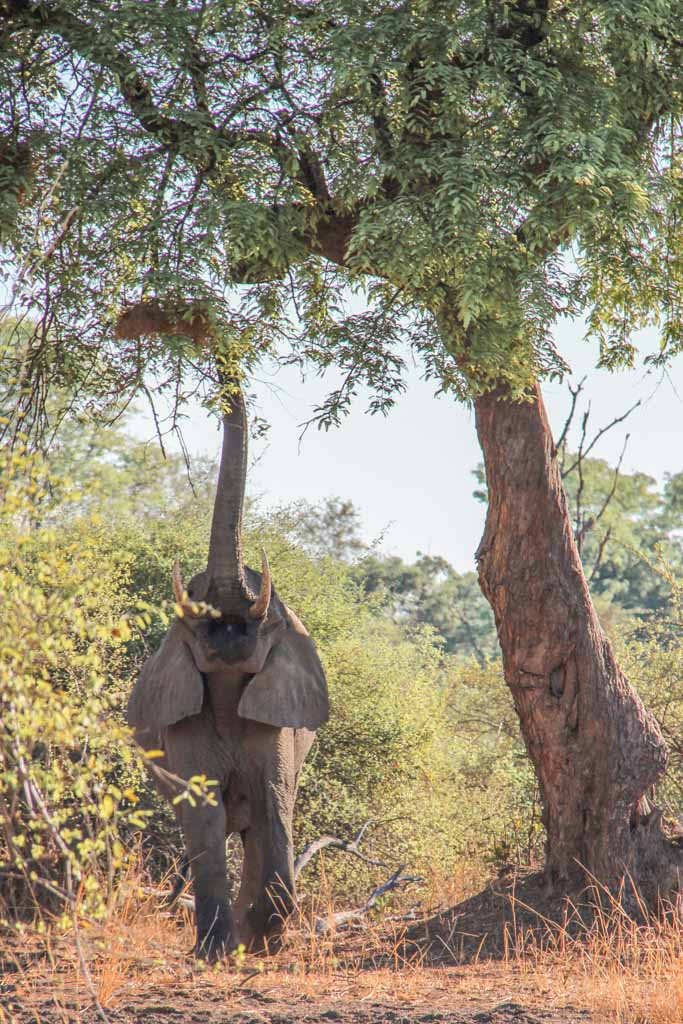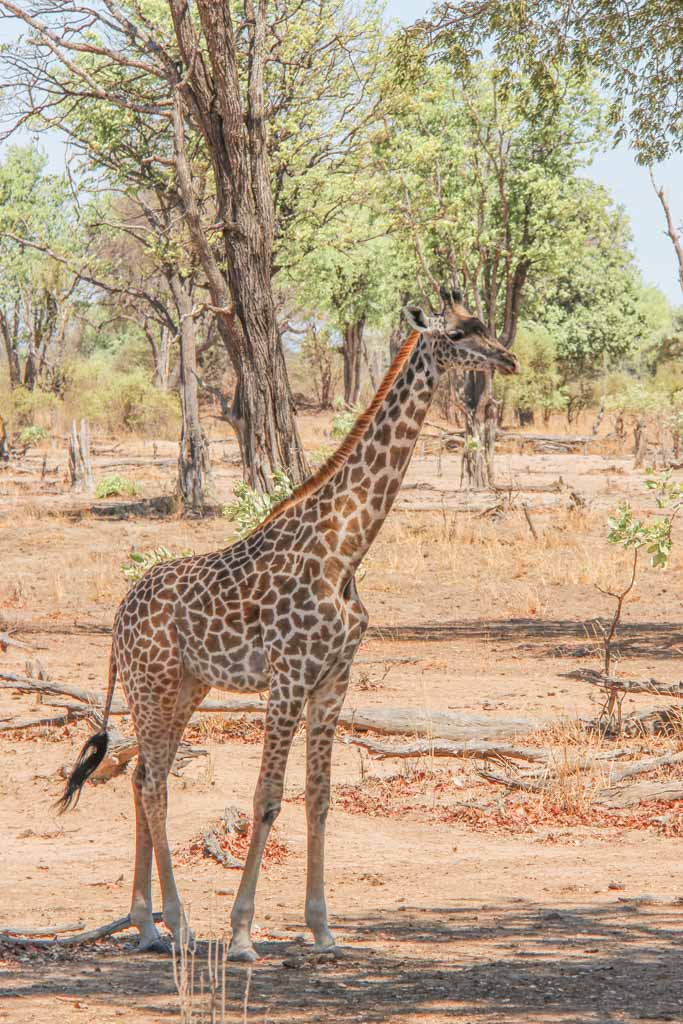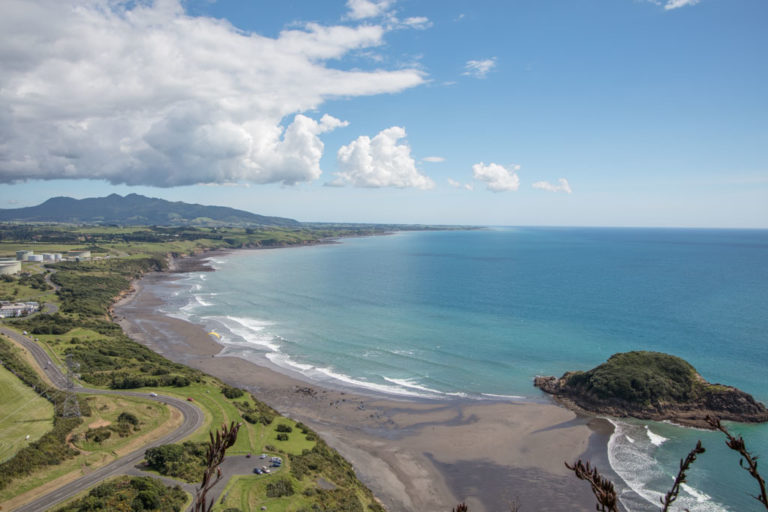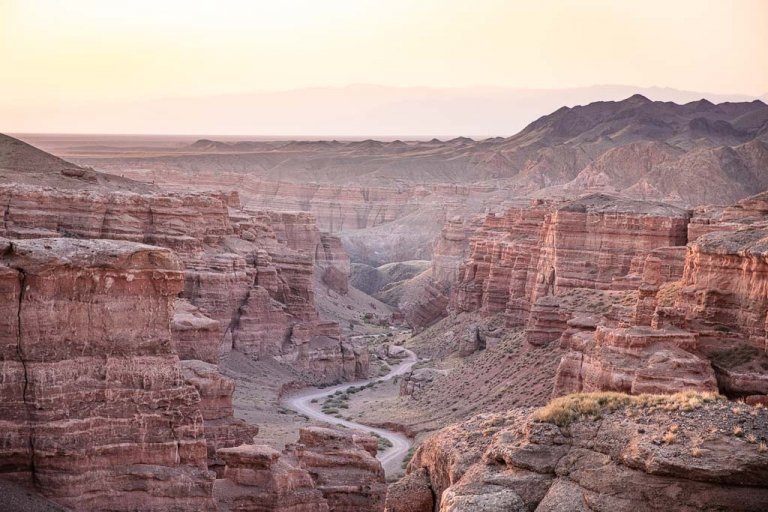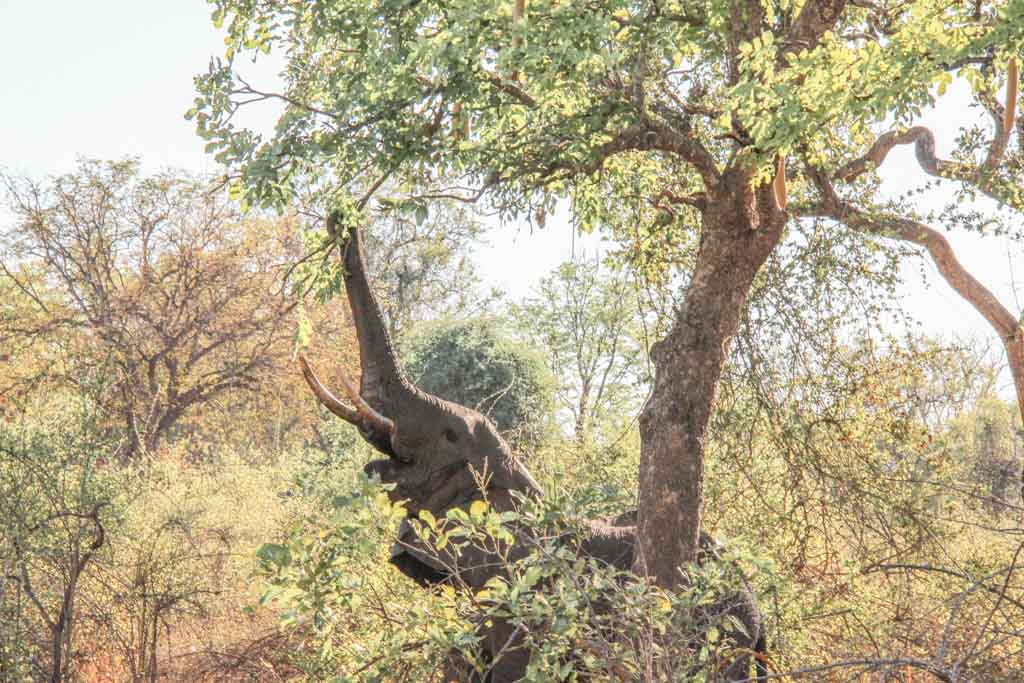
Visiting South Luangwa National Park, Zambia
Updated February 2024, South Luangwa National Park, Zambia was originally published in December 2020
South Luangwa, located at the eastern end of the Great Rift Valley, was a highlight of my trip through southern Africa a few years back. It seems that most who visit Zambia never go beyond Livingston, the town on the mighty Zambezi and home to Victoria Falls. If you’re looking for off the beaten path in southern Africa, Zambia is it.
Named one of the greatest wildlife sanctuaries in the world due to its pristine and varied sceneries and high concentration of wildlife, South Luangwa National Park is centered around the Luangwa River in eastern Zambia. South Luangwa is home to over 60 different animal species and over 400 bird species.
Established as a national park in 1972, South Luangwa is where the walking safari made its debut. With that said, South Luangwa National Park is still relatively unknown, making it a great alternative to high-traffic parks like the Serengeti and Kruger.
Visiting Victoria Falls on our Zambia itinerary? See why the Devil’s Pool is a thrilling must-see!
Need Travel Insurance and Evacuation Services for ?
Start shopping for travel insurance plans over at IATI Insurance. Readers of the Adventures of Nicole get a 5% discount off your plan.
The Adventures of Nicole partners with Global Rescue to offer the world’s leading medical evacuation and security advisory services. To travel with peace of mind, shop evacuation coverage at Global Rescue.

Why Visit South Luangwa National Park?
I plotted out a two month trip across southern Africa a few years back, hitting some amazing places along the way between Cape Town and Stone Town. I purposefully picked lesser-known parks to avoid the selfie stick mobs and truckloads of tourists, places like Etosha National Park, Bwabwata National Park, the Okavango Delta, Chobe National Park, Mikumi National Park, and South Luangwa.
Going to Botswana too? Don’t miss Chobe National Park
The Valley Of The Leopard
If you’re aiming to see leopards in the wild South Luangwa is the place that is most likely to help you tick this item off the list- it didn’t gain the name of ‘Valley of the Leopard’ for no good reason. Unfortunately, I didn’t manage to see a leopard while I was there (though I did get to see one in Namibia).

Off The Beaten Path Southern Africa
The main attraction to South Luangwa is the fact that it’s still off the main tourist radar in southern Africa, in fact, I’d say bar Livingston, almost all of Zambia is. Paired with a high concentration of wildlife, that made South Luangwa a win-win for me.
High-Density Wildlife
While smaller in relative size to other more well-known national parks in southern Africa, South Luangwa boasts an incredibly high concentration of animals.
The park is known for its large elephant and hippo herds, though you can also expect to see giraffes, monkeys, warthogs, buffalos, crocs, and an abundance of bird species. Additionally, keep an eye out for the rare Thornicroft giraffe.

Unique Walking Safaris
A definite once in a lifetime experience is going on a walking safari at South Luangwa National Park, in fact, it’s one of the only parks in Africa where it’s possible. You’ll find yourself roaming the savannah and woodlands with expert safari guides, spying animals, and birds from ground level.
Have Namibia on your southern Africa itinerary? Make sure to visit the Sossusvlei and Bwabwata National Park
One Of The Best Budget African Safaris
If you’re just beginning to research a trip to Africa, you’ve probably seen some very expensive safaris being advertised. While there’s nothing wrong with booking one of these all-inclusive trips (they can be rather enjoyable), it’s definitely out of the backpacker budget range for most of us. If sticking to a tight plan, you can pull off a budget of $75-85 per day at South Luangwa National Park.
This would include camping in your own tent ($10 USD per night), preparing your own meals (pick up fresh fruit and veggies from markets in Mfuwe or Chipata), and booking your jeep or walking safari through your lodge or camp ($40-50 USD per day). Of course, you’ll need to factor in the $25 USD per day park entrance fee.
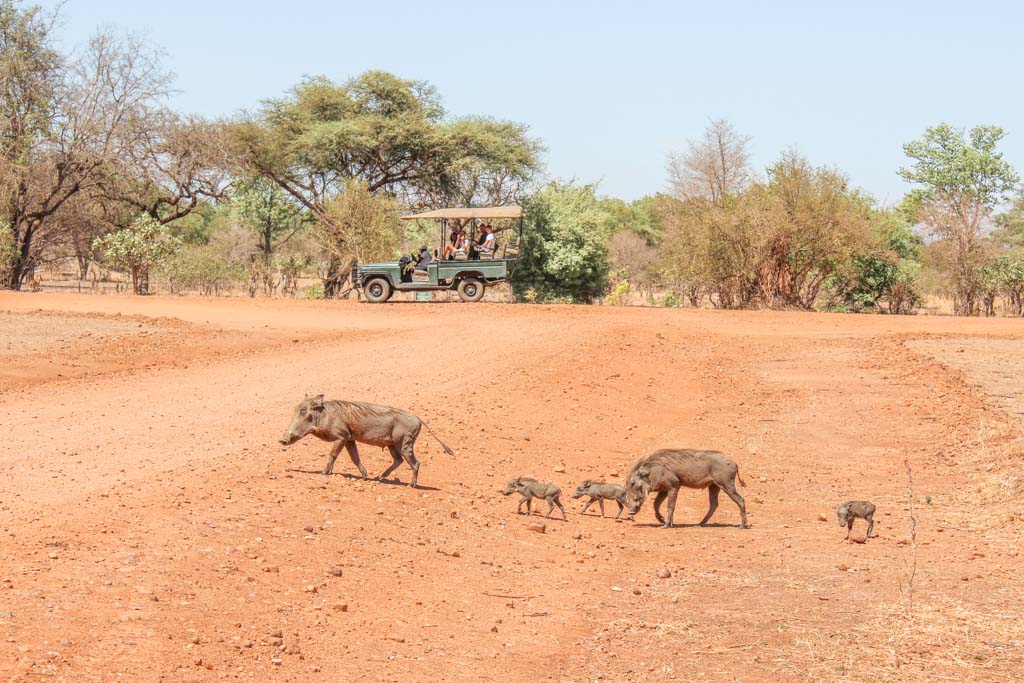
How To Get To South Luangwa National Park
South Luangwa National Park is accessible by air and overland. Those on a budget will likely opt to take the bus, while if you have a bit more cash to work with, a flight can really help you save time.
By Flight
Mfuwe International Airport serves South Luangwa National Park, flights to and from both Lusaka and Lilongwe Airport in Malawi. Proflight Zambia connects South Luangwa with Lusaka and other destinations in Zambia, while Ulendo Airlink connects South Luangwa with Lilongwe and other destinations in Malawi.
If you’ve booked a lodge, most offer airport transfer services.
By Bus
If you are coming from Lusaka, a direct bus to (Mfuwe) South Luangwa will take about 10 hours. You’ll want to book your bus ticket the day before you plan to leave as these busses tend to sell out. Fair warning: the Lusaka Bus Station can be a bit daunting, there are lots of drunks and crazies that hang around there that will not hesitate to harass you). A bus ticket should cost around 200 Kwacha.
You can also take a bus to Chipata if you plan to go there first (Chipata is also close to the border with Malawi for those planning to combine a Lake Malawi and South Luangwa visit). From Chipata, you can either take a bus or hire a car to bring you to Mfuwe or South Luangwa National Park.
Johabie and Jobus are two of the better bus company options for the journey.
Going on to Tanzania? Don’t miss Mikumi National Park
Park Fees (Per Day)
- Foreigner: $25 USD
- Zambian Resident: $20 USD
- Zambian Citizen: 41.70 Kwacha
- Vehicle Entrance Fees: $30 USD
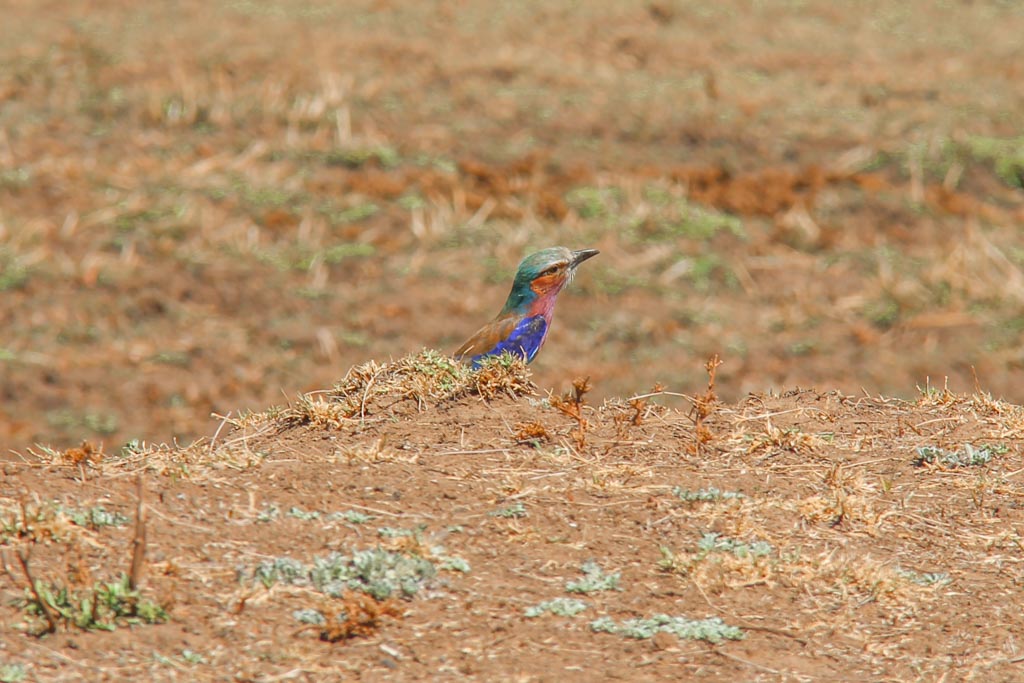
Jeep Safari Or Walking Safari Of South Luangwa National Park
You should definitely do both if time allows. South Luangwa is where walking safaris got their start, and it’s one of the few places where you can even go on a walking safari, so I’d say that if you have to choose between the two, it’s the more unique of the two experiences.
If you do opt to take a walking safari, you’ll be accompanied by an armed ranger in addition to a guide. Walking safaris allow you to get closer to wildlife than possible in a jeep, and gives you the ability to explore a bit more- check out tracks, insects, vegetation, and more.
You can expect to pay about $50 USD for a 4-hour walking safari, whereas a typical jeep safari will cost about $40 for 4 hours. You’ll want to enquire with your lodge in advance about booking walking safaris as they do need to be prearranged. Jeep safaris are easy to organize on the fly the day of.
Early morning and late afternoon is the best time to set out on safari as that is when animals are most active, plus you’ll get to catch sunrise or sunset out there too.
Going to South Africa? Plan a perfect 3 days in Cape Town
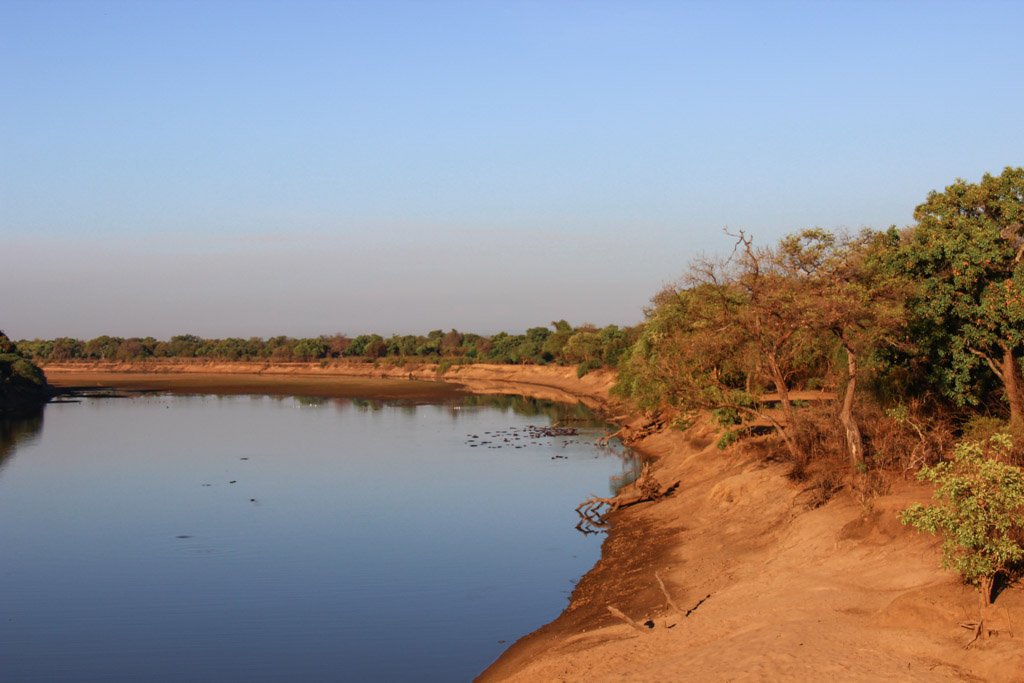
Accommodations In South Luangwa National Park
Despite South Luangwa National Park not being the most well-known park in southern Africa, there are a lot of accommodation options in and around the park suiting backpackers to high-end luxury travelers.
Several lodges offer camping on their grounds, which many travelers didn’t seem to know in advance when I visited. Croc Valley Camp, right on the banks of the Luangwa River is a great option, offering self-catering tent camping for $10 per night, as well as luxury riverfront glamping, a dorm, and chalets. Check Croc Valley Camp availability on booking.com and hotels.com.
Going to Zimbabwe too? Make sure and visit Victoria Falls to see why they call it ‘the smoke that thunders’
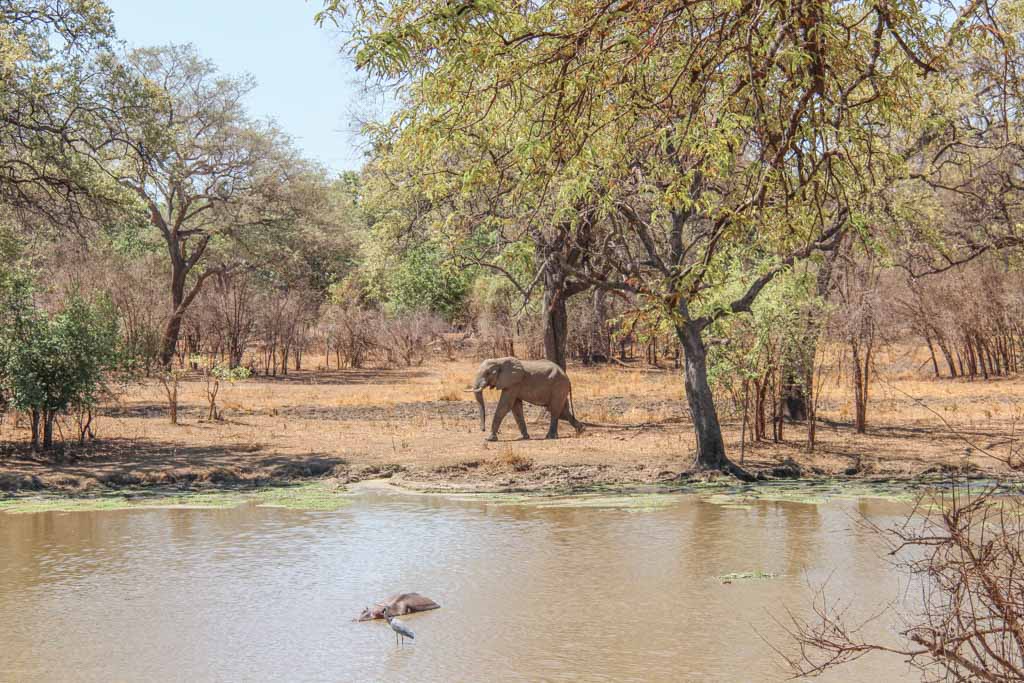
South Luangwa National Park Packing List
- Bradt Zambia Guidebook
- Camera
- Binoculars
- Sun hat
- Sunglasses
- Sunscreen
- Short sleeve top and windbreaker
- Shorts or trekking pants
- Comfortable walking shoes
- Medications and toiletries
Continuing your journey on toward the northeast? Don’t miss Lake Malawi
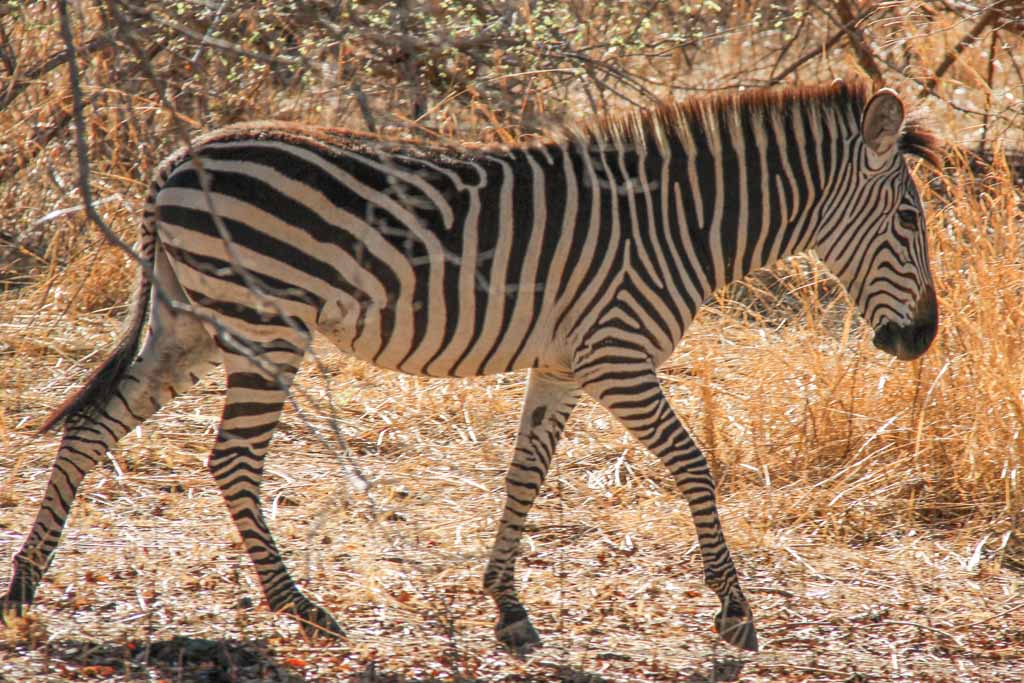
Other Important Information About South Luangwa National Park
- The best months to visit South Luangwa National Park are August and September as temperatures and humidity are comfortable and water levels are at their lowest, meaning wildlife is easier to find. May and October are still good months to visit, April and November aren’t too bad. December-March corresponds with the rainy season.
- Camps generally aren’t fenced, so don’t wander too far in the dark on your own.
Have Any Questions About Visiting South Luangwa National Park?
Ask in the comments section below.
